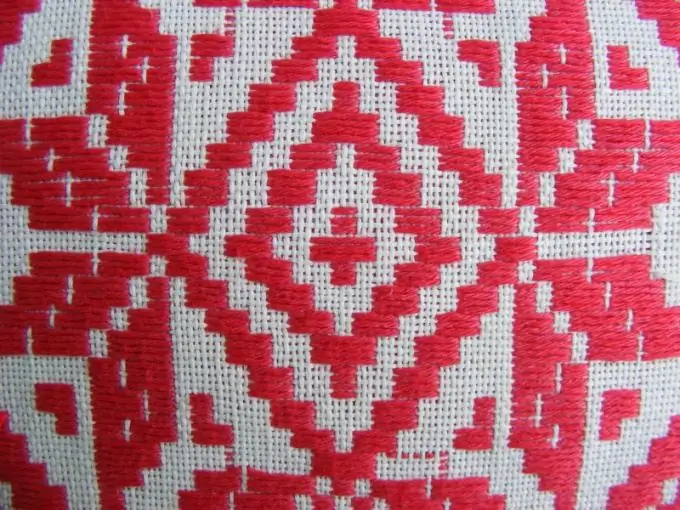People have always sought to decorate themselves and their homes. Folk costumes, carved furniture, embroidered tablecloths and tapestries - this is not a complete list of what can be decorated with exquisite ornaments. Folk craftsmen especially appreciated the ability to invent new patterns. You can also try to come up with your own ornament.

It is necessary
- - pictures depicting different ornaments;
- - paper;
- - pencil;
- - paints;
- - brush;
- - thin cardboard;
- - scissors;
- - colored paper.
Instructions
Step 1
Consider pictures with different types of painting, embroidery, carving. Pay close attention to the ornament. It can be both the main element of the painting and an auxiliary one (for example, for framing a plot composition). See what the patterns are made of. You will find only a few elements in each ornament. Consider also how these elements are connected to each other.
Step 2
Come up with pattern elements. The most popular are plant and geometric motifs, but in principle, the pattern can consist of any elements - birds, stars, shells, animal figures and individual elements of these figures, figures of arbitrary shape. Even in a floral or geometric ornament, you can add something of your own, for example, come up with an outlandish flower, which you have not seen in any picture, or a complex polygon. There should be at least two elements, but it is better if there are 4-5 of them.
Step 3
Make templates out of cardboard. Further actions depend on how confident you are in your artistic ability. If you are more or less firmly holding a pencil and a paintbrush in your hands, select places for the elements on the sheet of paper. Think of the order in which the elements will alternate. The ornament can be rhythmic, that is, it can consist of identical groups with a constant alternation of elements. But the fragments of the pattern can be arranged in any order. Trace the templates by placing the elements in their intended places.
Step 4
Think of what lines will connect the elements - straight, broken, wavy, with all kinds of loops, etc. Connect the elements. Lines can be decorated with smaller siblings, curls, parallel strokes, and more. Color in your pattern.
Step 5
If you doubt your ability to immediately arrange elements beautifully, cut out the elements of the pattern from colored paper. Try spreading them out on a sheet. See what you get. If you don't like it, swap the elements. When you realize that the composition has turned out the way you wanted, circle the elements, connect them with fancy lines and paint.
Step 6
Quite often, it becomes necessary to make a pattern from a central element and several smaller ones. Draw the main element. Make several smaller but similar ones. Place them around the main one. Connect the parts of the drawing with lines of a suitable style.






